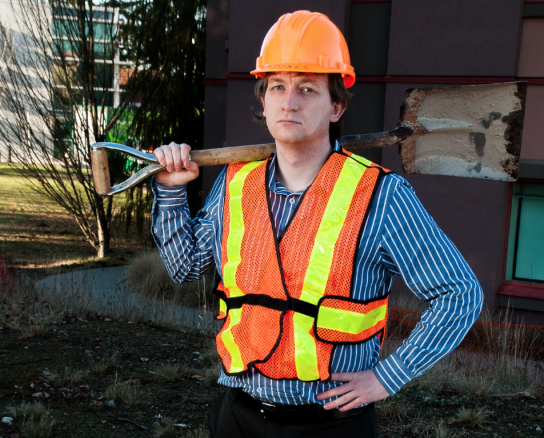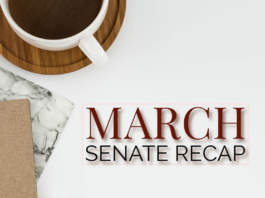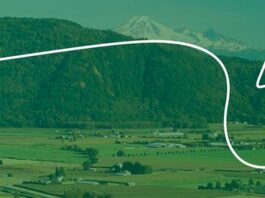By Jessica Wind (The Cascade) – Email
Print Edition: January 23, 2013
If you spend time walking from D building to the campus lounge formerly known as AfterMath you will recognize the dilapidated orange construction fence that surrounds a flattened pile of dirt. This site of the eventual Student Union Building (SUB) has remained untouched over the course of the last five years while SUS and UFV have tackled multiple challenges. They are finally in the final stages of approval; the last step being the green light from the Ministry of Advanced Education. If they succeed in breaking ground this spring, the real work will begin. For now here’s a look at the current state of the SUB.
SUS has spent a great deal of time working towards the construction of the SUB and getting students informed and excited about it. UFV who is partnering with SUS on the project has stayed relatively quieter over the years. As much as it will be a student union building, funded largely by students’ contribution through the capital building fund, the university has and will continue to take a large role in the building’s construction.
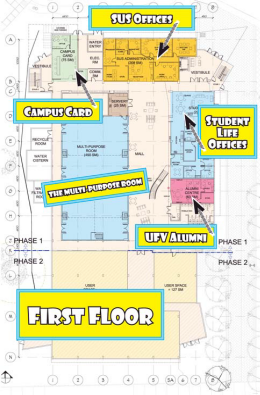 Chief financial officer Jackie Hogan describes the university’s involvement with the project.
Chief financial officer Jackie Hogan describes the university’s involvement with the project.
“The project [has] a $15 million budget, with $5 million from the university … We’re also contributing the land and management resources,” she said.
SUS went to the university in 2008 with the idea to build a student union building that would serve students as a hub of activity and resources on the Abbotsford campus.
UFV prepared to loan the money to SUS, but the sale of their Yale Road campus fell through and offering a lease of that size was not feasible. SUS then contacted the BC government to ask for a loan, but they were likewise unable to lend funding. It was at this point that the idea of mortgaging the building through a financial lender was proposed. Envision, SUS decided, was the institution best suited to fund the project.
Throughout these financial challenges, Hogan says, UFV remained committed to the idea of the SUB.
“I think that just does so much for generating a commitment to the university and a home on … campus,” she says. “[It will] create that environment that builds to a more enriching university experience.”
The project was originally planned as a one-stop-shop for students, but has been scaled down due to size constrictions. The architect sketches depict various services moving into the SUB, including the SUS offices, the pub (whatever it will be called at that point), the Career Centre, Student Life and campus media outlets CIVL radio and The Cascade. This leaves extensive space open in current school buildings for the university to repurpose.
“Plans are under way about what the vacated space would provide,” Hogan confirms. “We’re in dire need of classroom space and office space, so lots of ideas [are] coming forward.”
Apart from a couple of hurdles they still need to clear, including final approval from the ministry of advanced education, Hogan said that they are hoping to break ground this spring.
“Administration is just very excited about it,” she said. “It’s going to create such a great space on campus and it’s what we’re lacking.”
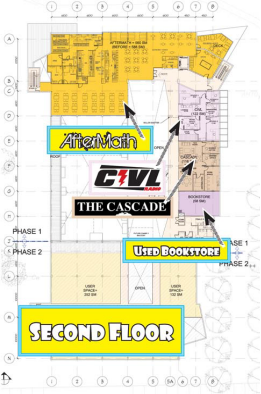 SUB referendum: A “bad foundation”?
SUB referendum: A “bad foundation”?
A student union building built by the student union society implies a certain sense of unity among the SUS. However, during November’s EGM VP academic Dan van der Kroon called for a referendum that would ask the students once more if they were prepared to pay for the SUB. The Capital Building Fund, which still appears as a fee attached to tuition, was introduced in 2008 after a referendum, which offered a reduction in the Student Health and Dental plan fee with the adoption of a $35 capital building fund fee to be paid every semester.
Van der Kroon spoke out against the implications of a referendum question worded in this way.
“It’s not an illegal way of doing democracy [but] it’s a very poor way of doing democracy,” he said. “It’s really important we get our democratic principles right – that we don’t get into bad habits.”
The project is theoretically approaching the construction point, but van der Kroon says that another referendum is necessary.
At a SUS board meeting held on December 7, van der Kroon brought a motion to the table to pursue another referendum, which was eventually defeated with eight votes against, two votes for and two abstentions. The preceding discussion acknowledged the wording of the 2008 referendum was confusing, but also that calling a referendum at this point would result in a loss of time and money already spent on the SUB project.
Van der Kroon maintains that moving forward with the project legitimizes the process by which it was voted in.
“I prefer to correct wrongs and then start over rather than starting off from … a bad foundation,” he explains.
His proposal for a referendum speaks to the confusion of the capital building fund fee and asks students if they support the cancellation, thus correcting the previous board’s oversight.
The referendum would also allow SUS to move forward based on the opinions of the students they currently represent. The 2008 referendum barely passed, and the following referendum regarding the sizable mortgage that SUS has taken on to build the building is now two years old in and of itself. Van der Kroon’s motion would make the current student voice clear in whether or not students are still willing to pay for the building, and continue paying for the duration of the mortgage.
That being said, van der Kroon agrees that the SUB is a positive thing for the Abbotsford campus. He says he won’t be upset to see it built, and there is certainly value in it for both the university and the community.
“One of the biggest values that I see in the SUB building [is] it will provide a place where you can set up a stage,” he said. “There’s a lack of a real, good venue in this region.”
Van der Kroon’s Motion
WHEREAS the existence of the Capital Building Fund reflects undue prejudice on behalf of the University of the Fraser Valley Student Union Society and in no way can confidently be said to reflect the genuine sentiments of the membership, BE IT RESOLVED THAT that UFV SUS conduct a referendum with the question, “Do you support cancelling the $35 per semester Capital Building Fund?”
History of the SUB
2008 – SUS approaches UFV with the idea to build a “One Stop Shop” for students. Student referendum passes with 52 per cent majority in favour of the capital building fund fee. 12 per cent of students voted.
2010 – SUB put on hold after funding supposed to come through from UFV following the sale of the Yale Road campus falls through.
2011 – Referendum asks students if they are willing to enter into a $10 million mortgage with Envision, to be repaid over the course of the next 30 years. 63 per cent vote in favour.
2012 – The date to break ground between April and June arrives and passes with no shovels in the ground.
2013 – According to original plans, the year SUB is set to open. According to updated plans, the year SUS hopes to break ground. Open house TBA: everything from design mock-ups to paint swatches will be on display, allowing students and members of the UFV community to get reacquainted with the SUB.
SUS talks SUB
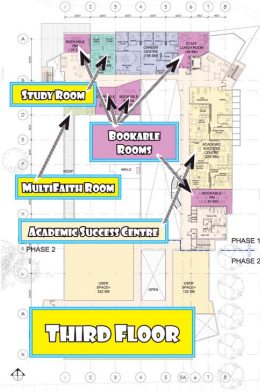 The majority of current students on campus weren’t around in 2008 when the idea for a Student Union Building took route. SUS decided that UFV Abbotsford campus was in need of a student space, polled the student body for a general opinion, and the rest is history.
The majority of current students on campus weren’t around in 2008 when the idea for a Student Union Building took route. SUS decided that UFV Abbotsford campus was in need of a student space, polled the student body for a general opinion, and the rest is history.
The SUB has been an ongoing project for at least five years and it seems as though the present SUS board is ready to break ground – almost. SUS president Shane Potter is hesitant to give an exact timeline, but is eager to put a shovel in the ground.
“The student government at the time didn’t have a realistic idea of a timeline,” he said. “So they gave early timelines … it was a new experience; they didn’t understand how long it would take.”
If all goes according to current plans, students and SUS could see the building completed by Fall semester 2014. For students just beginning their university experiences it might feel like a quick process, but SUS and UFV have gone through many challenges to bring it to this point.
Apart from overcoming various funding hurdles, the building itself has evolved. Originally it was planned as a sprawling two-floor structure, but the same square footage has been reworked into three floors, reducing the footprint of the structure on campus.
Potter assures that even though the student body has grown since the original plans were drawn, the SUB will be able to support them for the next 30 years.
General manager Meghan McDonald says there is a lot to get excited about with the construction of the SUB.
“I’ve always compared it to a living room of a campus. So you have very functional areas of a house like a kitchen where you cook, and bedroom where you sleep, but a living room is a gathering place, and that’s going to be the student union building here,” she says.
Both Potter and McDonald are positive about the opportunity that the SUB provides. It will allow SUS to grow and offer strong services to students by giving clubs and associations a place to meet and hold events, and allowing students to gather in the main open atrium or in the expanded space for the campus lounge. In short, the SUB will be a hub for all the the things that students want outside of their lectures.
“This is going to be a lot of fun … it’s going to give us an anchor,” Potter says.
For now, the future SUB it is still a flattened dirt pile outside D building that could double as an ice rink on cold days. However, before the end of the semester, you might be lucky enough to witness at least the beginning of construction of SUS’s long awaited SUB.
SUB is the new green
The Canada Education Park (CEP) campus might already be UFV’s signature green space, but the SUB will also be environmentally friendly: the construction of the SUB will focus on LEED gold level certification.
The new UFV building at CEP was built with this certification in mind, and the SUB is another step towards UFV’s environmentally conscious efforts. Sustainability initiatives built into the SUB will include low-flow plumbing fixtures to reduce water consumption by 30 per cent, energy cost savings 50 per cent above industry standard, and a focus on environmental quality through daylight, ventilation and indoor air quality.

